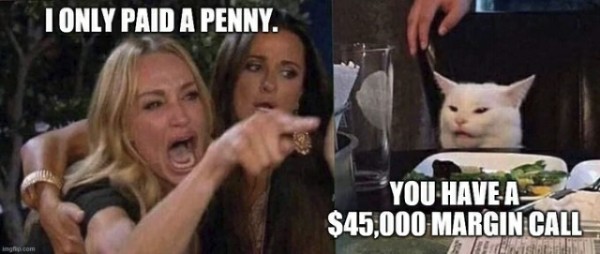‘Not everything that can be counted counts and not everything that counts can be counted’ – (attributed to Albert Einstein, a smart guy)
This post is on intangible assets. I want to touch on the importance and confusion surrounding intangible assets. The modern economy is built on the back of technology. Underlying that technology is intangible assets that are not properly reflected on financial statements. The balance sheet was reliable during the steel-making era, but it’s antiquated in today’s world of modern technology. As an investor, you need to recognize the value that intangible brings even though they can be hard to identify and quantify. But first, let me establish what we are talking about when it comes to assets, then I will touch on the accounting treatment, or mistreatment, of intangible assets.
All businesses have assets. An asset is a resource used to produce economic benefits. Assets can be tangible or intangible. You know what tangible assets are. These are your physical assets such as plants, machinery, equipment, and property. You can see it. You can touch it. Accounting standards have been developed to address tangible assets. Take a bunch of hard physical assets, put it on the balance sheet, and depreciate it over their useful life. Let’s say a machine is estimated to be good for ten years, then a non-cash “expense” is applied over ten years. So far so good.
Over time, especially since the rise of tech companies, intangible assets have increasingly dominated the resources a business employs. If you look at some of the world’s most valuable companies, such as Amazon, Alphabet (Google), Netflix, and Meta (formerly Facebook), they don’t have a lot of fixed assets compared to traditional brick-and-mortar companies. It’s their intangible assets that drive their value. This characteristic is primarily due to the nature of their business models, which rely heavily on technology, intellectual property, and human capital rather than good old physical assets. These companies don’t carry inventory or equipment.
Intangibles are the assets that you can’t see or touch. They are not physical assets. Hence the “in” in intangible. These are your brands, trademark, patent, goodwill, intellectual property, rights, client relationships, and reputation among other things. It could also be things like proprietary algorithms, data, or a special feature in an app like the “thumbs up” button.
We know intangible assets have value because they produce goods and services that bring in money. There’s no denying that the logo of a bitten apple, or a golden arch, means serious business. Not sure? Without that golden arch, you don’t have Mcdonald’s, you have a restaurant serving bad food. Without that iconic red logo, you don’t have Coca-Cola, you have dirty brown water (Pepsi gets a pass, but who buys generic cola?). Without that super sophisticated search algorithm, you can Google things instead of going to the library (you should still go to the library).
Now that we have established that intangible assets are a real thing that makes money, and if it makes money it has value. What’s the accounting treatment of intangible assets? That’s where the confusion and complexity comes in.
As I mentioned earlier, accounting norms were created for the brick-and-mortar companies, the ones with physical assets that you can easily identify and put on a balance sheet. With intangible assets, it’s not so easy. I don’t want to get into an accounting nerd fight but the accounting world was built with physical assets in mind. With intangibles, nothing is straightforward.
As a confusion starter, you have intangibles that are on the balance sheet and some that are not. Internally generated intangible assets, like a brand, are not on the balance sheet. Some of the biggest brands in the world, like Apple, have no brand value on their balance sheet. Interbrand, in their annual ranking of the World’s Most Valuable Brands, estimated that in 2022 Apple’s brand was worth $482 billion. $482 billion! For something you can’t touch, for something that exists in our head (that is the love of Apple products).
Go look at Apple’s balance sheet in the 2022 10-K, there’s nothing about the brand. Apple has $352 billion in total assets and $120 billion of that are marketable securities (stock and bonds), their biggest listed asset. Even if you apply a 50% haircut to Interbrand’s number, the Apple brand dwarf all the other listed assets. The word “brand” came up three times in a word search of the entire 10-K and the results were insignificant (something about AppleCare, a co-branded credit card, and the Apple store).
We can debate what’s the exact value of the Apple brand, but we can’t deny that it’s a major asset that prints money. At the moment of writing this, Apple is approaching the $3 trillion market cap. From this number, we can imply that the market does not value Apple for the assets on the balance sheet, but for the growth and cash flow it generates, which is underpinned by its great brand.
The problem is that traditional financial reporting is inadequate at quantifying the value of intangibles. Accounting principles state that the money spent to develop the brand, intellectual property, and R&D is expensed on the income statement in the selling, general, and administrative (SG&A) section, instead of showing up on the property, plant, and equipment (PP&E) section of the balance sheet. What the accounting standards are saying is that by expensing R&D immediately, there’s no value in the future. But we know that’s bunker. Some intangible spending is an investment that will generate cash flow in the future.
Part of the reason why such investments don’t show up as an asset on the balance sheet is that expenses are intertwined with each other. Intangible investments are blended with operating expenses. The line is blurry. How much marketing expenses are actually investments and what is a proper useful life for those assets? I welcome you to read the Intangibles and Earnings report by Michael J. Mauboussin and Dan Callahan, where such questions and more are explored.
However, if you acquire a company, the accounting rules change. During an acquisition, then the acquired intangibles show up on the balance sheet and are capitalized. To go back to Apple, let’s say Banana Inc. acquires them, then Banana Inc. would have to add the Apple brand to its balance sheet in a process called purchase price allocation (PPA).
Some acquired intangibles have a useful life. Some are infinite, like a trademark (as long as the business exists). If the intangible is on the balance sheet, there’s also the question of “How much is it worth?” There’s a little bit of financial gymnastic when it comes to valuing intangibles like a brand.
The confusion doesn’t stop at how you identify and value an intangible asset. What about amortization charges related to acquiring the intangible, do you add it back? Does the intangible asset need maintenance expenses? You need to be careful with the risk of double counting if future expenditure on maintaining the value of the intangible asset is expensed rather than capitalized.
Are you having fun yet? I warned you at the beginning. And haven’t got to goodwill, the Cadillac of intangibles. I’m not talking about the good kind of goodwill, which more of it is better. I’m talking about accounting goodwill, where more is not necessarily better. Goodwill arises from an acquisition. It arises when the PPA process runs out of assets to attribute the purchase price too, so they invented a line called goodwill. It’s a plug number for accountants to make sure things balance. Let’s say you buy a business for $1 million, and the only asset is a picture of me worth $1, then $999,999 is going to goodwill (the value of the picture is in the eye of the beholder). Hopefully, that value doesn’t get impaired.
There’s no straightforward answer on how to address the confusion. Experts don’t agree with each other and I don’t have a good answer myself. In their defense, an accountant would say that you can’t put an intangible asset like brand value on the balance sheet because it’s very volatile, and it’s true. Brand value jumps around a lot. How reliable is the balance sheet if your biggest asset jumps around 50%?
I think that in some cases intangibles should be treated like tangible assets, where you put them on the balance sheet and amortize it over its useful life. Some intangible amortization is a real expense and you should add back some of the charges. It should be addressed on a case-by-case basis.
Next, I’ll address what’s in it for the investor.
The Intangible Assets Juggernauts
What do Apple, Amazon, Alphabet, Meta, Netflix, Microsoft, Intel, Oracle, Tencent, Adobe, Uber, Airbnb, Alibaba, Shopify, and many more, have in common? They are some of the world’s most valuable technology companies. They invest massively in intellectual property, R&D, technology, and human capital. The “assets” that underpin the knowledge economy. And as I mentioned earlier, like in the Apple case, most of the assets don’t appear on the balance sheet.
These companies leverage their intellectual property, digital infrastructure, and network effects to create value and dominate their respective markets. However, it’s important to note that while fixed assets may not be as prominent, these companies still have substantial operational costs, including investments in R&D, marketing, and maintaining their digital infrastructure. These costs are huge and important to maintain their competitive position.
As an investor, you need to recognize how intangible assets can be crucial drivers of a company’s competitive advantage and future earnings potential. Even if you can’t quantify it. Understanding this concept helps explain the Amazon story. Understanding the Amazon story might help you find the next “Amazon” What’s the Amazon story?
Traditional value investors looked at Amazon and said “It’s overvalued because it has thin margins and no profit.” Amazon is worth over $1 trillion and made Jeff Bezos, the founder, one of the world’s wealthiest. For a company that started as an online book store, they must be doing something right. Amazon is a bit of a hybrid company, a combination of old and new worlds. It’s a tech company with a lot of tangible assets, like inventory, giant warehouses, and data centers.
The main reason for misunderstanding Amazon’s valuation is that the company reinvests all its money on R&D, which are operating expenses on the income statement. This has the effect of understating profit. And because profits are kept low, its Price-to-Earnings (P/E) ratio never made sense. As I’m writing this, Amazon has a P/E of 292x. It doesn’t make sense and it never did. But it proves my point. Amazon’s earnings are meaningless because the company is massively investing in growth. Those operating expenses are actually investments that generate future cash flow in the future. If you looked beyond the traditional valuation metric, you would have made a fortune. I didn’t. And now I’m writing.
The same goes for return on capital. With the current reporting standards, the return on capital is overstated if you have a bunch of non-listed intangibles because you understated the invested capital. Add the $482 billion of brand value to the assets of Apple, and your return on assets and equity drops.
When looking at companies with massive R&D expenses, you will have to make adjustments. You have to dig deeper. Regarding valuation, as I explained, valuing technology companies on book value or traditional metrics can be misleading and inadequate. Traditional Price-to-Book captures tangible assets. At the risk of repeating myself, the approach misses a lot of embedded value in an intangible asset since traditional accounting doesn’t capture it.
Unquantifiable
So far we have established that traditional accounting standards don’t capture the embedded value intangible assets bring and that traditional valuation metrics are inadequate for technology-heavy companies.
I want to take this conversation to another level. I don’t know if we will ever get to a point where we can accurately measure intangibles. That’s beside the point. I want to go beyond accounting.
What I want to get to, is that there are intangibles that it’s impossible to put a number on them. For example, accounting standards don’t take people into consideration. Their value is zero. But people are an organization’s number one asset. What if you have a Michael Jordan, or a Steve Jobs on your team? They are not on the balance sheet. But that key person is the difference between massive success and average results. You have to go beyond the financial statements.
A smart man named Albert Einstein apparently said “Not everything that can be counted counts and not everything that counts can be counted.” How do you put a number on Trust? Integrity? Respect? Reliability? Loyalty? Desire? Culture? What about social networks and political connections? You can’t quantify it. But you don’t need to be a sophisticated investor to recognize its importance and how it drives long-term value creation. That’s the key.
The point of this post is not to debate how accountants should handle intangibles, but to recognize the importance of intangible assets and the role they play in the modern economy. They have become an important factor in value creation. You might not identify or measure an intangible asset with precision, but you need to recognize how it drives value, even if it’s not on the balance sheet. This means you might have to dig a little deeper.
At the end of the day, you are trying to determine free cash flow to estimate value. With that in mind, just like a tangible asset, you need to make the necessary adjustments that give you an accurate estimate of value. As I said in the past, valuation is an art, not a science.
Further Readings






